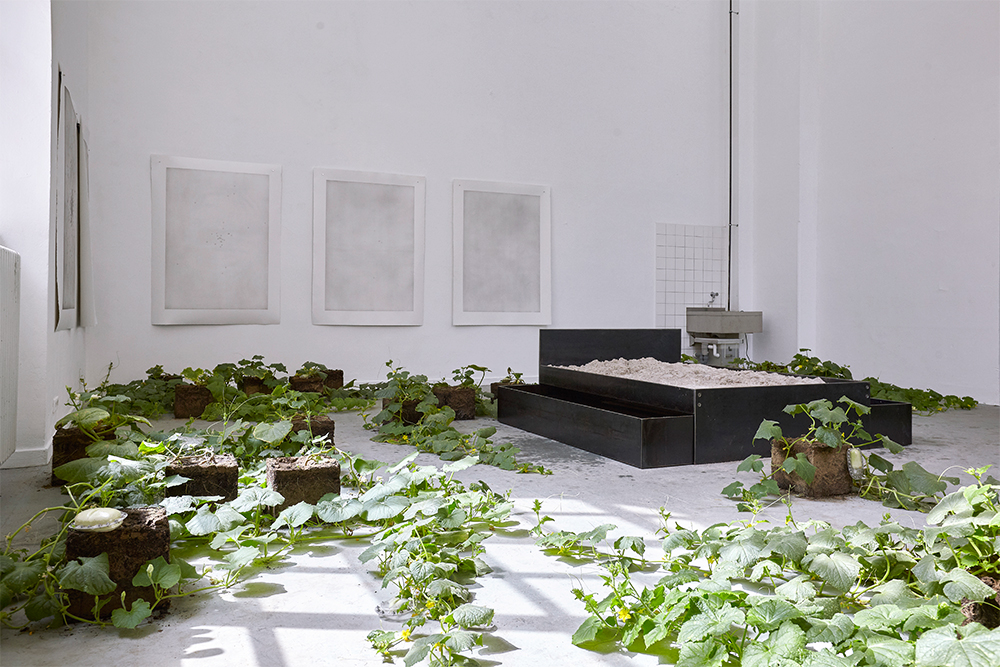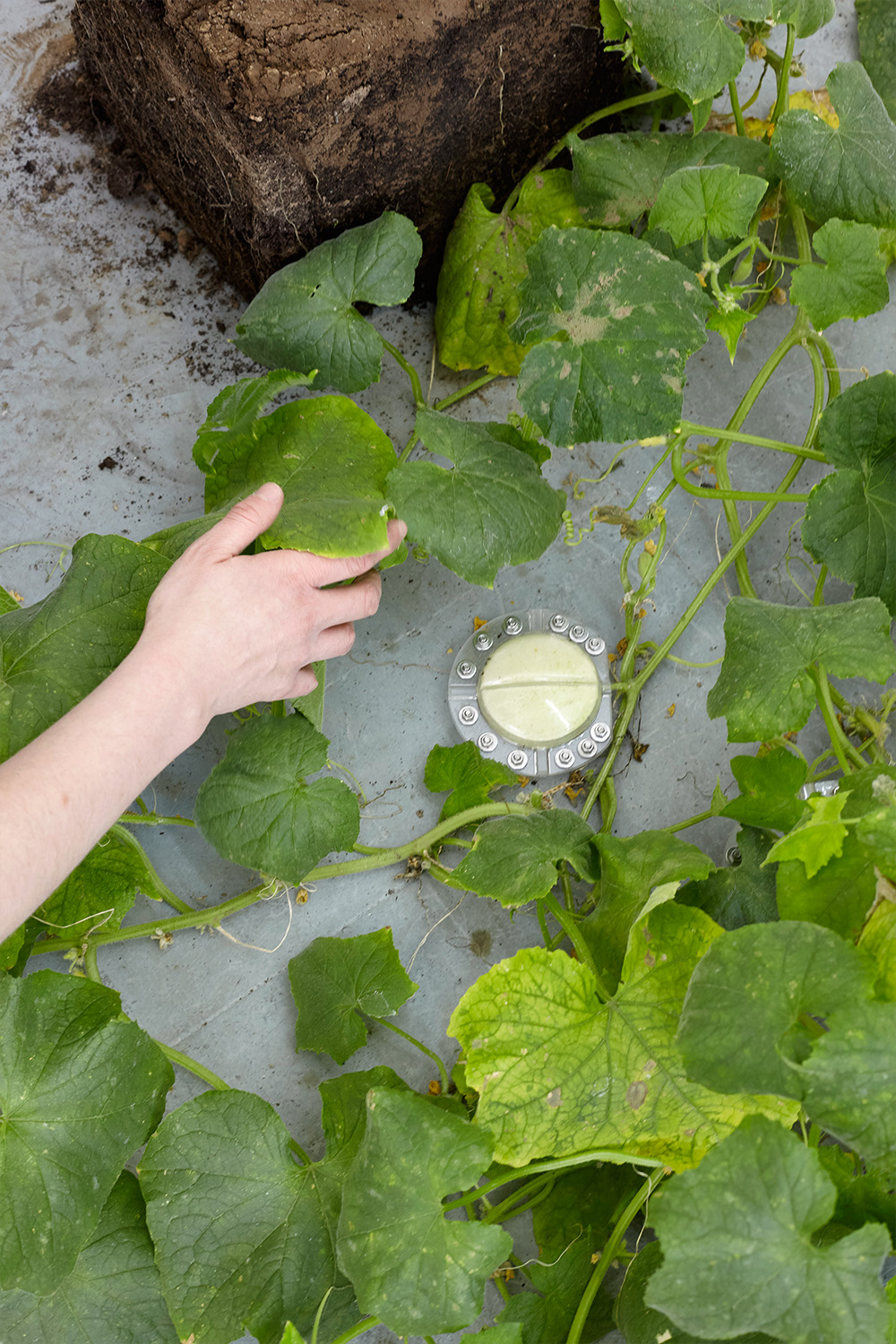A steel bed was on display (200 x 200 x 60 cm) centrally located within the room, filled with water and sand. 55 earthen cubes (30 x 30 x 30 cm) with cucumber plants of the variety White Wonder growing from them, were strewn around the bed. Each of the plants had grown vines several meters in length and the cucumbers themselves had been encased in various Plexiglass moulds (15 – 20 cm) and were in the process of assuming the shapes of their respective growth regulating surroundings. There was a 6 meter high fountain installed above the washbasin.
The room was lined with a series of 8 large engravings printed on handmade paper, 1 Day, 1 Week, 1 Month, 1 Quarter, 1 Year, 10 Years, 30 Years, 100 Years (each 175 x 100 cm).
The sound of gushing water caused by Inverted Fountain was audible, a sound that resembled that of a waterfall due to a a sieve placed in the basin intercepting the falling water.
One could feel the significantly increased humidity and the wind blowing through the open windows moving both the leaves of the plants and the prints on the wall. If you wanted, you could sit on the bed and play with the moulds lying in the sand.
The room smelt of plants and earth.
White Wonder
Sometimes the laughter of children echoes through the half open door. The room is filled with the fragrance of growing plants – a greenhouse-like atmosphere, reinforced by the humidity of a waterfall, spring-fed from the institutional sink in the right corner. To the children‘s delight, the bed is filled with sand and small molds with which they are allowed to play – adding their excitement to the atmospheric amalgamation: A strange sense of pressure created by humidity, scent and sound.
Strewn around the bed are cubic chunks of earth from which cucumber plants crawl across the floor. Some of the cucumber blossoms have fructified and the sprouting bodies have been encased in plastic molds inhibiting and directing future growth. The molds are the same as the ones that the children play with. Their shapes vary, most are similar to pharmaceutical products: pills, capsules; one seems to resemble a smiling Buddha.
On the walls pills are again present, depicted on large prints multiplying from one print to the next, like cells dividing into uncounted multitudes until completely covering the final iteration of the print series. “It’s a depiction of time, each print displays the amounts of pills that were consumed at different intervals: a day, a week, a month, a quarter, a year, ten years, thirty years, a hundred”.
“I compare the atmosphere to the feeling of deep sorrow experienced while going through a depression. The endless days in bed, unable to move, trapped on the mattress, lost in thoughts that haunt the mind. A void filled with sand, the feeling of drowning in it. Of being buried alive. Time becomes brittle, like tiny grains of sand embracing the body while grinding its skin dry.”
Water-surface-mirrors, they are often a gate into another reality, the subconscious. One where time flows differently and the boundary between dreams, thoughts and reality is more fluid. The permanent sough of water falling, the sound so very present. White noise. A disturbing presence of mourning. A pool filled with tears, ein Tränenbecken. Water falling a long way down. A downward movement, a negative trend determining the subconscious. A pessimist perspective: The bed is filled with quicksand, that could devour you – maybe it’s like a portal. But maybe the basin of water below protects against sinking too deep.
The greenhouse in which you incubate, hide: planting pills, to nurture, to decay.
An old person‘s delight becomes a crazy person‘s delay.
The bed – the walls – the plants – the molds – the inverted fountain – the installation as an environment, a narrative of absent grief.
Eliza Ballesteros and $narrator, 2017














 M.L.
M.L. A.R.
A.R.